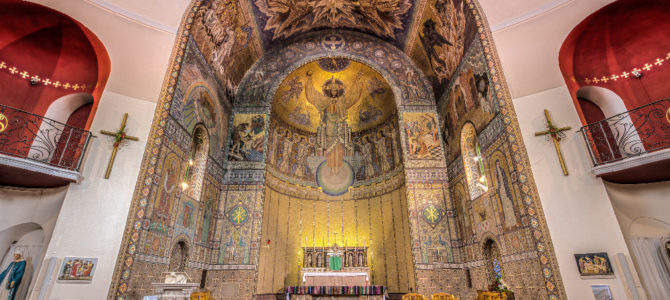
During October, the bishops and cardinals of the Catholic Church have been meeting in Rome for the 2018 Youth Synod. Its goal is to put together a document that addresses the concerns of young people both inside and outside the church and propose ways to better serve them.
Only the Catholic Church would think that gathering a group of elderly out-of-touch clergymen to write statements as a committee is the best way to reach young people. To be fair, this kind of method is appropriate for clarifying matters of doctrine and church procedures, although on these matters, Pope Francis prefers to either speak in riddles or keep silent.
On the issue of young people, however, only the most determined Vatican reporters will bother reading or analyzing the synod’s document (such as Robert Royal at The Catholic Thing). Everyone else, including actual clergymen who work with actual young people, will somehow find a way to carry on without consulting the synod’s wisdom.
To make matters worse, many contributors to the document and the general discussion will likely be overruled by Pope Francis and his cronies in the final version of the document. In the past, the bishops voted on each article, requiring a two-thirds majority to include it. Because this did not align with Pope Francis’s progressivism, he initially decided to assume the authority of final approval. The vote has since been reinstated, but Pope Francis still picks the editors who may write new things into the final draft. In the 2015 Family Synod, he publicly voiced his disapproval of the final document and effectively negated its legitimacy and relevance.
We Already Know What Will Happen, and It’s Not Helpful
The saddest part about the synod is the fact that the bishops are uniquely unqualified to say anything about youth. Not only have they shown themselves unwilling to protect them (young laymen and seminarians) when a priest or bishop abuses or exploits them, and done all in their power to discourage prospective priests who could raise a new generation of Catholics, they have also little to no contact with the youth, or most laity for that matter. Each bishop oversees a huge diocese containing hundreds of churches and hundreds of thousands of parishioners. There are so many levels of bureaucracy between him and the average believer that it would be hard to imagine a more distant relationship.
Perhaps sensing this great gap, the bishops have come equipped. A special point made this year is the focus on sociological data. No longer will they look at church teachings or scripture or tradition — they will look at pie charts, surveys, and graphs that tell them in clean scientific terms that kids find church boring and lame.
One can predict the product of this synod will be a document that intends to make church even more boring and lame. It will surely call for more “openness,” more “tolerance,” more “listening,” more “authentic” religious experiences, and condemn people who do not seem to find these lessons anywhere in scripture or church teaching. Indeed, it will be difficult to see what the church is for, besides vaguely validating people who couldn’t care less about it.
Since this is the likely result of this synod—along with most of Pope Francis’s encyclicals and initiatives—it seems apparent that church leaders have little intention of reaching the youth, or anyone for that matter. If they did, they would totally reverse their present course. They would stop having meetings, watering down doctrine, adopting modern trends, looking at dubious social science for guidance, and paying attention to the youth as such.
What Smart Church Leaders Would Do Instead
Is this even possible? Can one go to Mass without the baby boomer priest yukking it up with bad jokes and bland sermons, without the adult contemporary hymns of Dan Schutte and David Haas, without the handholding during the “Our Father,” and without the gaggle of geezers distributing communion? It is possible, and many parishes do it. Those that do are the ones brimming with young people and new vocations.
These parishes also say Mass in Latin, use Gregorian chant and Renaissance polyphony, enforce a strict dress code that encourages veiling, and have long lines for confession every Sunday. Their priests quote old saints like St. Alphonsus Liguori and St. Charles Borromeo and often follow a rigorous monastic discipline in their own lives. Sadly, because of the prevailing prejudice against traditional parishes, they celebrate Mass in shabby buildings located in the poorest, most unsafe neighborhoods.
If anyone wonders whom exactly Pope Francis is talking about when he criticizes legalistic, rigid, intolerant Catholics in the church, it is the people of these traditional parishes. Right now, they are a small, marginalized group who are simply happy to worship. For decades, the Progressive luminaries banned celebrating the Latin Mass, before Pope Emeritus Benedict restored it in 2008. Nevertheless, these people represent the future of the church, not the aged members of the Youth Synod.
Instead of composing a useless document filled with reheated progressive clichés about the need to reach the youth and stay relevant—all of which is simply another way of admitting defeat to the surrounding culture—bishops should consider why these traditional parishes seem to do so well. They may discover that young people don’t actually respond to making things easier or more open, but rather to the opposite: They want something more challenging and more exclusive. Kids will go to great lengths to find purpose and meaning in their life, taking on all of the demands of sports, music, academics, work, and fitting in with various groups of people.
The same is true for adults. A church that lacks definition and seems cut off from any discernible tradition or authority may just as well not exist. Many mainline Protestant and mainstream Catholic churches are in swift decline for this reason. At a time when people desperately need Christ and community in their lives, church leaders propose being nicer to homosexuals and hosting talks about population control.
Young Christians can take hope that there is at least one church out there for them. It’s not glamorous, it’s often out of the way, and people, including religious leaders, will mock and rebuke its members. But it’s a living church that stands for something. If they become frustrated, they can consult their Bibles and see that it was always this way. Once they see it, and more importantly experience it, they can then take heart that they have joined something truly good.









